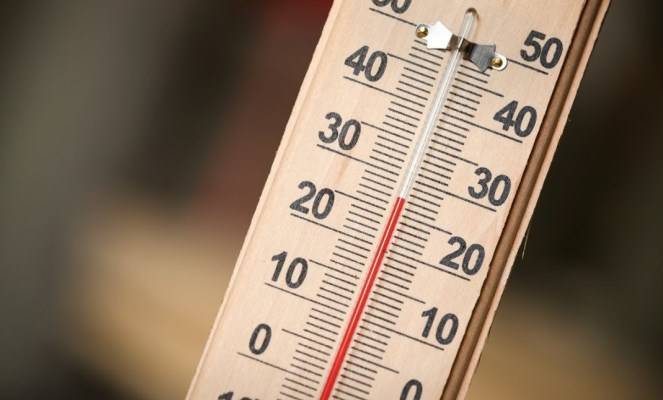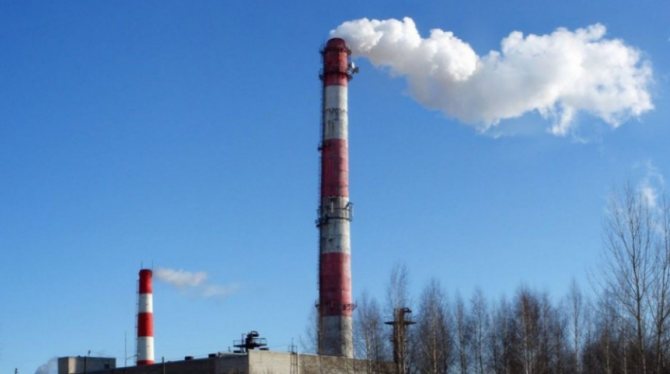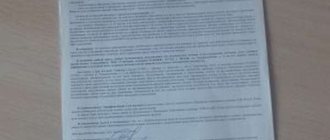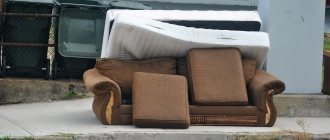Parameters for turning on the heating
Heating is supplied in accordance with the standards prescribed in Decree No. 354 of 2011.
It contains information that heat is supplied to apartment buildings at an air temperature outside the window of +8°C, which persists for 5 days. If there are changes in temperature, the radiators will remain cold.
IMPORTANT! The heating is turned on only on the sixth day. Basically, in all regions, the heating season begins on October 15 and lasts until April 15.
When is heating supplied to houses?
Autumn is a time of significant temperature amplitudes. If the mark on the thermometer fluctuates within 8 C◦ for five days, then the sixth day will be marked by the supply of heat to the house. And, on the contrary, if after a four-day period it gets warmer outside, the connection of the heating supply will be postponed.
Note! The heating season ends in the spring with average daily temperature fluctuations around 8°C lasting five days.
These are the installation requirements for all multi-apartment households. But some changes have been made to one of the directives of the decree.
This regulatory act states that the house must be connected to heat immediately after the temperature outside the window is close to the calculated value established upon delivery of the heating project for a particular building. Simply put, the decree plans an individual approach to each home.
In 2020, it is customary to supply heat after massive demands from the population. Regional authorities have launched popular voting on websites.
Temperature standards
The heating circuit of a residential multi-storey building interacts with a centralized system to which pipes are connected. Through them, water flows into the apartment building, where it is subsequently regulated by valves.
Then it flows through the risers into the radiators and radiators of each living space. The heating system coolant parameters are established by regulations. As a rule, it should be brought to a temperature of 130-150°C.
But this indicator is affected by the temperature outside. Basically, the water temperature at the boiler outlet is 115°C. According to regulations, the temperature in the heating system can be 95-105°C. In order for comfortable conditions to be created in the apartment, the proper condition of the parameters of the riser through which water from the heating unit is delivered to the apartment must be ensured. Depending on the season, parameters may vary. In winter, the riser should be heated to 70-90°C.
What temperature should radiators be in winter?
If the apartment is still cold when the heating season begins, you need to find out the reasons for this deviation. The most common is airiness in the system, which is easy to deal with on your own. If radiators and pipes work normally, most likely, the standard heat in the apartment does not depend on them.
Standards
Heat transfer standards for batteries are the values established by law for heating radiators, which are necessary to maintain a comfortable microclimate in a living space and are +18...+25°C. They are established by SNiP 41-01-2003.
Standard temperature in an apartment according to SanPin
Every home must have a suitable microclimate. And it cannot be achieved without observing comfortable temperature standards. They are registered in SanPin. According to these standards, temperature
- 18-24°C is acceptable in the living room;
- 18-26°C – in the bathroom, toilet and kitchen;
- 16-22°C – in the inter-apartment corridor;
- 14-20°C – on the staircase and in the lobby;
- 12-22°C - in the pantry.
These standards apply in the cold season, and in the warm season each indicator increases by 4 °C. There should not be a difference in temperature between adjacent rooms of more than 3°C, otherwise a person will experience discomfort while moving around the apartment.
Temperature standards for the heating system in an apartment building
The heating circuit in apartment buildings is built in cooperation with a centralized system to which the pipes are connected. Through them, the coolant is directed to the apartment building, where its further supply is regulated by inlet valves. After this, the water goes through the risers and eventually ends up in the radiators and radiators of each apartment.
The described processes, as well as everything related to the rules for providing the population with utility resources, are reflected in the Decree of the Government of the Russian Federation dated May 6, 2011 No. 354 “On the provision of utility services to owners and users of premises in apartment buildings and residential buildings” (hereinafter referred to as Decree No. 354). Heating quality requirements are set out in Section VI of Appendix No. 1 to the rules of Decree No. 354.
In addition, detailed rules for the provision of heating services are prescribed in the Order of Rosstandart dated June 11, 2014 No. 544-st “GOST R 51617-2014. National standard of the Russian Federation. Housing and communal services and management of apartment buildings. Public utilities. General requirements" (hereinafter - GOST R 51617-2014) and "GOST 30494-2011. Interstate standard. Residential and public buildings. Indoor microclimate parameters”, approved by order of Rosstandart dated July 12, 2012 No. 191-st (hereinafter referred to as GOST 30494-2011).
These acts establish the parameters of the coolant for the heating system of an apartment building. Thus, the temperature of the coolant (water) when supplied to the system is equal to the temperature of the water when it leaves the heating boiler. As a rule, the coolant should be brought to a temperature of 130-150 °C, but this indicator also depends on the outside temperature in the region.
Typically, the water leaving the boiler should have a temperature of 115 °C.
However, the standard temperature in the heating system can be within 95 ° C or 105 ° C (for different systems).
Next, to create comfortable conditions in the room, the proper condition of the parameters of the riser, which conducts water from the heating unit to the apartment, is ensured. They vary depending on the summer and winter seasons.
Of course, in practice, the temperature of the coolant in the riser depends on the operation of the thermal power plant and on heat loss on the way to the house. However, the riser temperature in winter should be in the range of 70-90 °C.

Normal battery temperature in an apartment
Several factors influence the heating of a room: thermal conductivity, the order of installation of batteries and a number of other technical characteristics. If the batteries are installed in compliance with all the rules, then their temperature will correspond to the norm. Although there is no law stating the minimum permissible temperature of the batteries themselves.
As for the maximum temperature indicator of batteries in an apartment during the cold season, it is 95°C (subject to a two-pipe heating system). The optimal temperature is 85-90°C, because at 100°C water already boils. Exceeding these temperatures leads to faster failure of the radiator.
Normal temperature in a corner apartment
The area of the external walls of a corner apartment is much larger than that of a regular apartment. The temperature in the room also depends on this. Therefore, in such apartments, according to standards, the temperature should reach +20° C and not fall below. It is for this purpose that additional heating radiators are installed in rooms adjacent to the street.
Normal room temperature at work
Working conditions in the premises are created in such a way that no harm is caused to human health and performance is at its best.
When working on temperature standards in a workroom, officials take into account the humidity and speed of air movement in it, the temperature of various surfaces and other parameters. It turns out that the less physical activity a person does during his working day, the higher the temperature in the room should be.
Yes, when
- low physical activity in winter, the air temperature should be 22-24 ° C, and in summer – 23-25 ° C;
- average physical activity in winter – 19-21° C, in summer – 20-22° C;
- increased physical activity in winter – 17-19° C, in summer – 19-21° C;
- high physical activity in winter - 16-18 ° C, in summer - 18-20 ° C.
Battery temperature standard
Factors affecting room heating include thermal conductivity, other technical characteristics, as well as the order of installation of batteries. Therefore, compliance with the rules for their installation and use will ensure that the temperature of the heating radiators in the apartment and in the house meets the established standards.
In addition, you should carefully consider determining the number of battery sections depending on the area of the room. For example, a device in which the coolant is heated to an identical temperature will have a different effect on the heat flow with sections 5 and 7 on it.
Be sure to read it! What are the purposes of processing personal data in the organization
Permissible temperature minimum
Oddly enough, the law does not stipulate a minimum threshold for what the temperature of the batteries in the apartment should be. The only thing that can be said with certainty is that the heat released by the batteries should be enough to warm the air in the apartment to 18-25 ℃. Consequently, under conditions of severe frosts and weak heating of heating batteries, it is quite difficult to achieve acceptable air temperatures.
What should the maximum value be?
In contrast to the minimum, the maximum value is precisely specified in SNiP 41-01-2003 “Heating, ventilation and air conditioning”. This document defines the standards established for indoor heating system elements:
- The maximum permissible standard temperature for radiators in an apartment is considered to be 95°C with a two-pipe heating system;
- With a single-pipe heating system, the temperature maximum is 115°C;
- The recommended temperature is between 85°C and 90°C. This is due to the fact that 100°C is the boiling point of water. When this indicator is reached, special measures are taken to prevent boiling;
Please note: Although the temperature maximum is 115°C, operating batteries in this mode is not recommended. They break quickly if they work under such increased load.
Air in the apartment
There are uniform standards that determine the heat index in a residential area. According to them, during the heating period the apartment must maintain the following temperature regime:
- In the living room - +18°C.
- In the corner living room - +20°C.
- In the bathroom at least +25°C.
- In the toilet (if located separately from the bathroom) - +18°C.
- If the bathroom is combined - + 25°C.
- In the kitchen at least +18°C.
The standards are established according to GOST. They are designed to preserve the health of residents. Common premises also have their own standards. The indicators should be:
- Entrance — +16°С.
- Elevator - +5°C.
- Attic and basement - +4°С.
If the actual parameters do not meet the standards, you should contact the heating network. These circumstances make it possible to reduce heating payments by 0.15% for each hour of deviation.
Batteries
The heating of a living space is influenced by many factors: technical characteristics, thermal conductivity, installation of batteries, etc. Their correct installation and operation will create the necessary conditions for heating radiators in living rooms to comply with current standards.
It is worth paying attention to the number of battery sections. A coolant heated to the same temperature with a different number of sections will heat differently.
Minimum
Very often, when the heating is on, residents complain about a lack of heat. The main reason is the discrepancy between the standard temperature of the radiators and the actual one. Airiness of the system can influence this fact.
If the fault is the unusable condition of the battery or pipe, they will need to be replaced. In this situation, while the heating system is inoperative, apartment residents should not pay for heating.
The minimum standard temperature for batteries has not been determined, so you need to focus on the heating of the air in the apartment. The temperature standards for living rooms in an apartment building should be +16-+25°C. If it does not meet the standards, a specialist from the heat supply company is called to the house.
Heating calculation schedules
Let us give as an example a small table of coolant temperature depending on the outside temperature. In their work, boiler houses use two calculation schedules. The first implies +105 degrees on the supply pipe and 70 in the return pipe. The second implies a temperature in the supply pipe of +95 degrees and +70 in the return pipe. Depending on this, the pipe temperature varies in the following ranges:

During abnormal frosts, boiler houses are often unable to maintain the required temperature in the pipes due to possible breakdowns caused by increased power.
- +43 on the graph 105/70 and +41 degrees on the graph 95-70, with an outside temperature of +8 degrees;
- +56 on the graph 105/70 and +52 degrees on the graph 95-70, at zero outside temperature;
- +71 on the graph 105/70 and +65 degrees on the graph 95-70, with an outside temperature of -10 degrees;
- +85 on the graph 105/70 and +78 degrees on the graph 95-70, with an outside temperature of -20 degrees;
- +105 on the 105/70 chart and +95 degrees on the 95-70 chart, with street temperatures of -35 degrees.
The figures presented vary depending on the specific climatic conditions in a particular area.
Knowing the heating standards in apartment buildings, you can fight for your rights in case of non-compliance. The red tape with recalculation is lengthy, but if you leave things to chance, the heat supplier will completely forget about his responsibilities.
Maximum
Maximum heating rates in the apartment:
- If there is a two-pipe heating structure, the maximum possible temperature is +95°C.
- If the heating system is single-pipe, the temperature of the battery must be at least 115°C.
The recommended figure for optimal indicators is 85-90°C. If the mark reaches or exceeds 100°C, you must take the necessary measures to prevent the water in the heating system from boiling.
As a rule, during the production of radiators, the maximum permissible temperature threshold is indicated. But it is advisable to avoid strong heat to prevent damage to the radiator.
ATTENTION! The water temperature in the battery should be no more than 20°C, the temperature at which the material can ignite.
Measurement
If apartment residents have doubts about the quality work of the heat supply company and the room is very cold, it is necessary to establish the cause of the poorly heated radiators. First of all, you will need to measure the temperature of the pipes, radiator, air in the room and the water itself in the heating system.
It must be borne in mind that self-conducted measurements cannot be presented as evidence of violation of standards. But based on them, you can file a complaint and subsequently invite employees of the service company for control measurements.
Heating situation
With the beginning of the heating season in our country, a huge number of complaints about the operation of heating in winter are observed. Consumers are dissatisfied with the temperature of radiators and air; apartments are downright cold. There are plenty of reasons for this:
- Negligence of utility workers (they don’t forget to take money, but they don’t remember the rules).
- Heating mains that are worn out and require repair.
- Boiler rooms requiring major repairs.
The result of all this is cold pipes and dissatisfied consumers who want to live in comfortable conditions.
The temperature of the coolant in the heating system depends on current weather conditions. The lower the temperature indicators “overboard”, the higher they are in the heating pipes. In some cases, no one is monitoring this, and consumers begin to complain and fight for their rights. But before throwing paperwork at the supervisory authorities, you need to familiarize yourself with the current regulations.
Definition of water
It is impossible to measure the water temperature in a central heating system with reliable accuracy. Only air temperature can be determined most accurately. You can measure it as follows:
- Open the tap (provided that it is installed in the apartment).
- Place a container with a thermometer.
- Fill with water.
- Wait for the thermometer result.
A slight upward deviation of 4°C is allowed.
DHW
You can set the temperature in another way. Since batteries and hot water supply are interconnected, it is more advisable to measure the temperature through a hot tap.
To measure, place a container with a thermometer under running hot water. In a few minutes you can see the results. If the mark shows 60-75°C, the coolant meets the norm.
ATTENTION! If the temperature is lower, it means the water is not heated enough.
Radiator
Measuring their temperature is easy:
- You need to take a regular thermometer and apply it to the battery. Wait a few minutes until it warms up. Add 1-2 degrees to the result obtained.
- Measurement using an infrared thermometer. They have a small error and do not need to come into direct contact with the heating device. The result is quite fast.
- Use an electrical device with a sensor and a thermal lamp. By installing the sensor on the battery, the device will display the value.
What to do
If there is a problem with cold batteries, you need to clarify whether it arose in a specific room or whether other residents also suffer from it. If the quality of heating does not meet the standards, you can file a collective or individual complaint:
- To a service organization (management company, construction cooperative, etc.).
- To the service provider.
- To the emergency dispatch service.
- Housing inspection.
Once accepted, the complaint must be registered. After which, they must establish the reason and draw up an act of violation. Based on this document, a recalculation is made for the period when there was no heat.
If there is no response to the complaint and no action is taken to correct problems in the heating system, you need to contact Rospotrebnadzor.
Failure to comply with requirements by the heat supply organization
When the duration of repair activities exceeds the time allocated according to the standards, the heat supplier is obliged to recalculate the payment; its amount decreases by 0.15% for each extra hour of disconnected heat supply. According to the rules, the same recalculation must be performed for the entire time when the temperature in the apartments was less than permissible (18 ° C). In this case, the amount of payment taken away cannot be greater than the amount for the entire period when enough heat was not supplied to the radiators for heating. In some cases, the regulatory document allows for complete exemption of affected residents from payment.
To achieve the discount provided for by law, residents of an apartment building must complete a number of formalities:
- After taking air temperature measurements, report the violation of standards to the dispatch service of the heat energy supplier. It is best to make a written statement signed by those living in the apartment.
- The application must be registered in the prescribed manner.
- According to the rules, after receiving a complaint, an inspection must be carried out by technicians within 2 hours. They are required to visit the home and check how many degrees there are in the apartment at the moment.
- Based on the results of the inspection, a report is drawn up, signed by the inspectors and the injured party. If necessary, an additional examination may be assigned, the cost of which will be paid by the heat supplier. But if the examination concludes that the standards have not been violated, its cost will be included in the payment for thermal energy.
Practice shows that employees of a heating network company may not come with an inspection or their visit does not bring results. In such a situation, the act is drawn up independently and endorsed by at least 2 service users, and then by the chairman chosen by the council of owners of the apartment building. A copy of the act is officially transferred to the heat supply organization and is registered there. The provision of low quality services is considered from the moment when the act is signed by all parties.
Be sure to read it! Is it possible to return theater tickets purchased via the Internet to the box office: how to return them legally
Further failure by the enterprise to fulfill its obligations leads to legal proceedings, where a previously drawn up act that has legal force will play an important role. Such actions against unscrupulous heat suppliers are necessary to encourage them to reconstruct worn-out networks and equipment; it will be more expensive to pay claims.
What to do if standards are violated
If you find that the radiators in the apartment are cold, you should find out whether this is a problem exclusively for this room or whether all residents of the house are faced with it. A collective appeal always attracts more attention than an individual one.
If the quality of heating is unsatisfactory and does not comply with SNiP, a complaint can be filed:
- to a service organization: homeowners association, management company, housing construction cooperative;
- resource supply company;
- emergency dispatch service;
- housing inspection. It usually operates a special hotline for such requests.
Organizations will receive the complaint over the phone and then register it. After this, specialists will establish and eliminate the cause of the lack of heating, recording a violation.
Later, based on the heating network inspection report, a recalculation for the period of no heat occurs.
If the above organizations do not take any measures to restore heating, you should file a complaint with Rospotrebnadzor and the prosecutor's office.
Where to go
People living in multi-story buildings depend on central networks for almost everything. Those who have a gas boiler installed at home are lucky, because these people can regulate the temperature in their home themselves. But people warming themselves from central heating are not so lucky. Complaints arise very often: some people don’t like that the apartment is too cold, while others, on the contrary, are tired of living in the heat and overpaying for heat. Those who are faced with such a problem can call a commission to measure the temperature in the living room. When the results are received, the commission will draw up a measurement report, with which the apartment owner can then go to the thermal power plant, and if necessary, then to Rospotrebnadzor with the prosecutor’s office.
How to properly file a complaint
A justified and correctly drawn up complaint that the temperature in the apartment does not correspond to the norm, attached to other necessary papers, becomes an official document. The necessary authorities can no longer ignore it.
When filing a complaint, you must adhere to a number of rules:
- in the header of the document, located in the upper right corner, the name of the organization to which the owner intends to apply, as well as his personal data (full name, address, telephone number);
- in the central part of the document the word “Claim” is written, and below the whole situation is described in detail: what violations were committed during the heating supply, for how long and what this led to.
- Below, the apartment owner must request a recalculation of utility bills and set out his other requirements (if any).
- You can write that if the requirements are not met, then he (the owner) will go to higher authorities for compensation.
- Be sure to put a date and signature at the end of the claim.
When filing a collective claim, it is necessary to attach a sheet on which all residents of the apartment building interested in resolving the issue have left their signatures in advance. Two copies of the claim must be made.
How to sue for cold batteries
If the rights of the apartment owner have been violated, then the last authority where he will have to turn is the court. Only for this he will have to prepare well, collecting many different documents to form an evidence base. It would also be very good to first seek advice from a lawyer so that he can help tell what the owner’s chances of success are and advise him on how to defend his rights. After this, you will have to wait patiently for the proceedings to be carried out because it may take a long time. The result will depend on the individual characteristics of the situation.









